
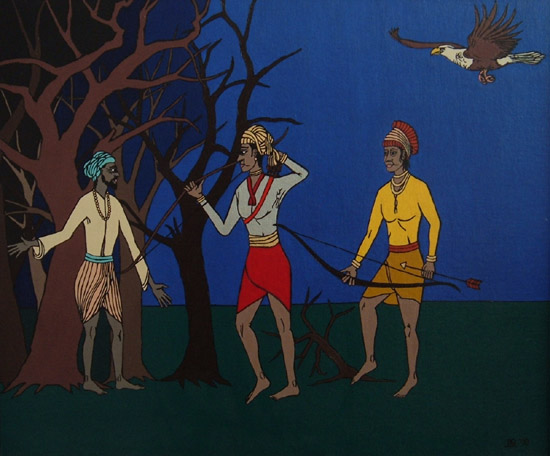
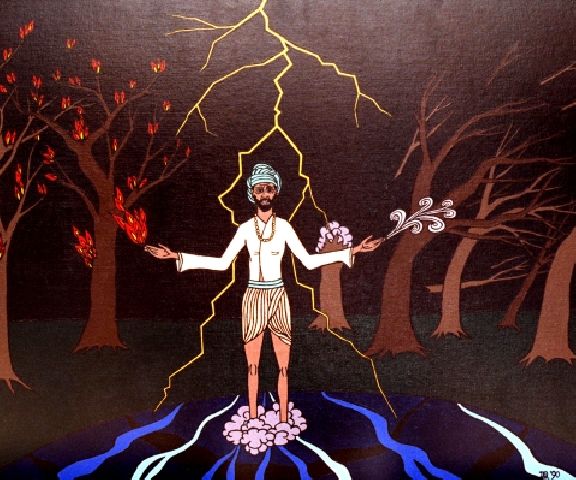
The original exhibit of the Ramayana in Mythstories museum consisted of a series of 15 paintings telling the story. The were created by artist Dez Quarréll between 1988 and 1992.
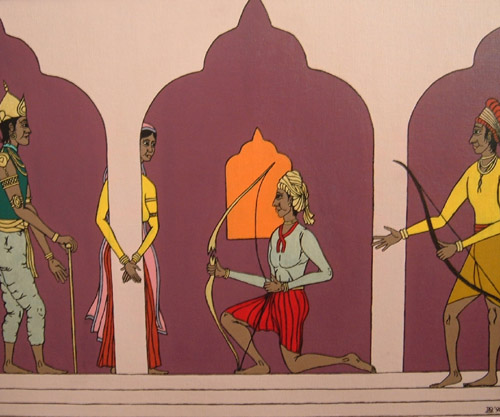
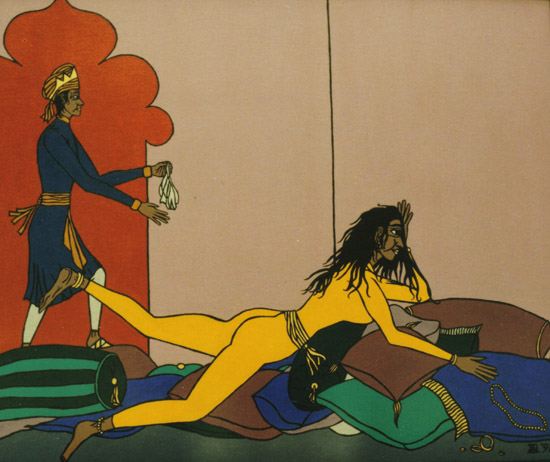
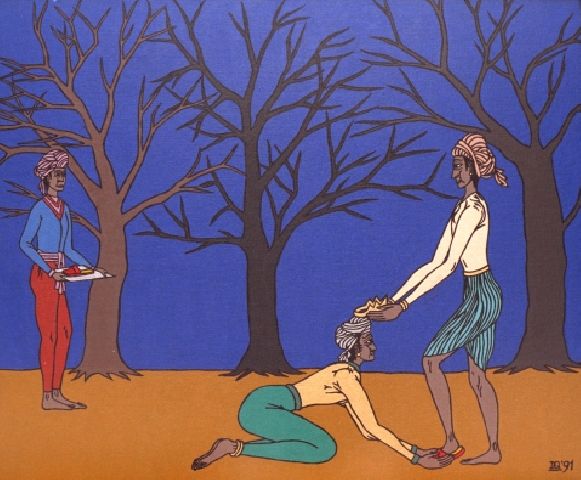
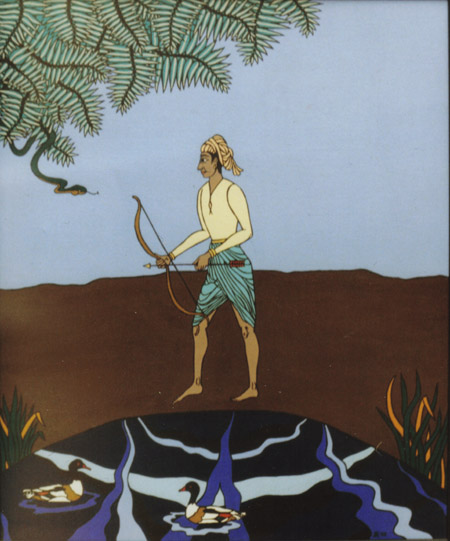
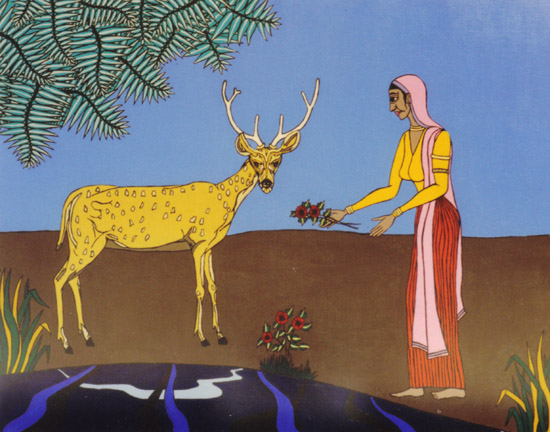
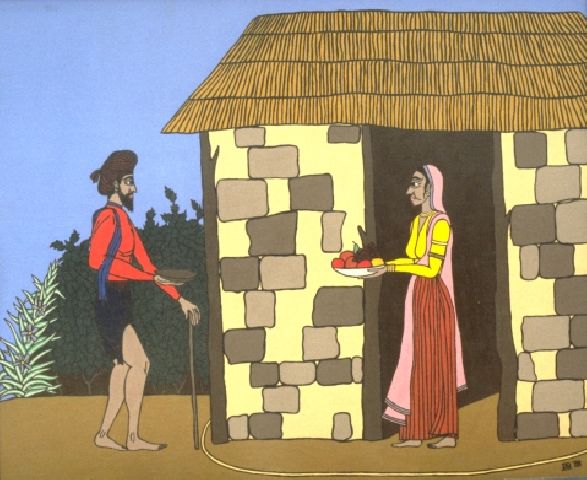
The paintings were exhibited at many major galleries across the West Midlands before spending three years on display at the Children’s Day Surgery Unit at Royal Shrewsbury Hospital. Patients could listen to the artist’s audio version of the story through headphones and view the paintings while waiting for their medical procedures.
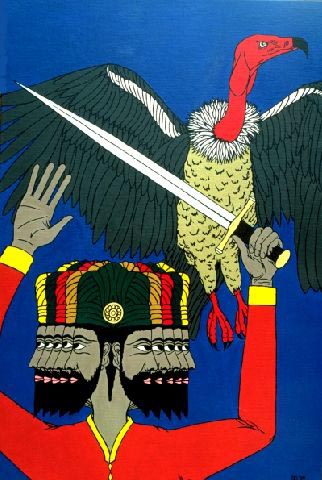
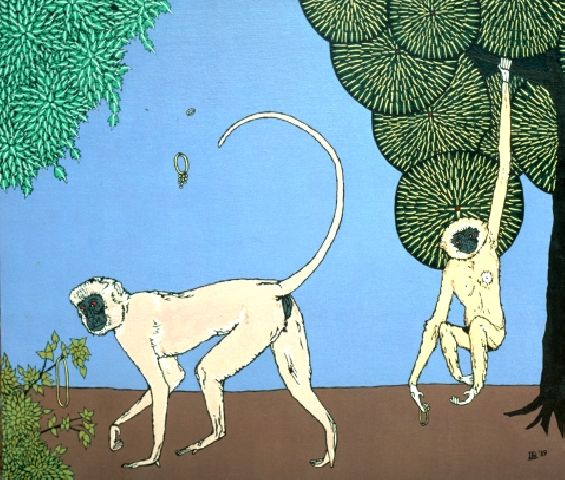
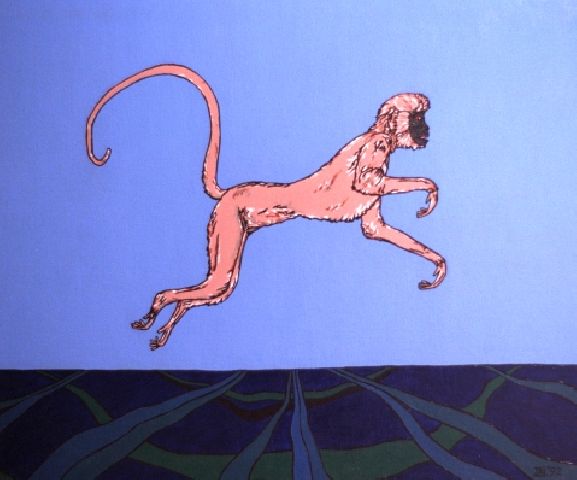
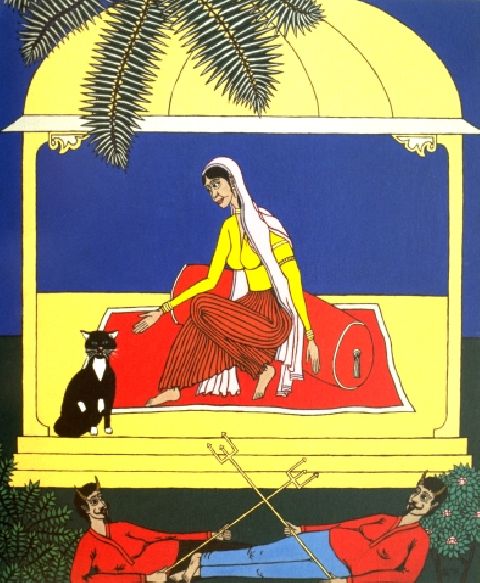
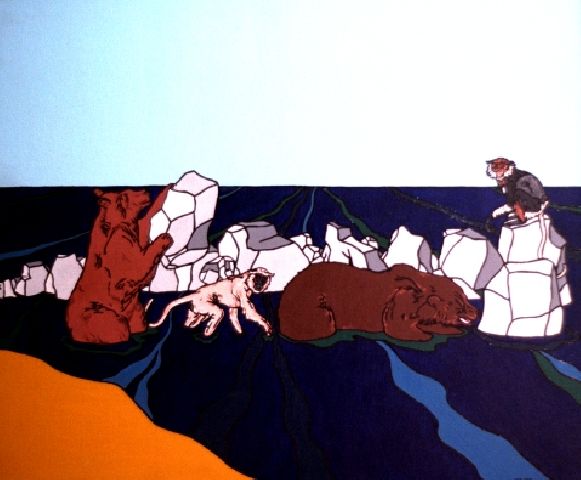
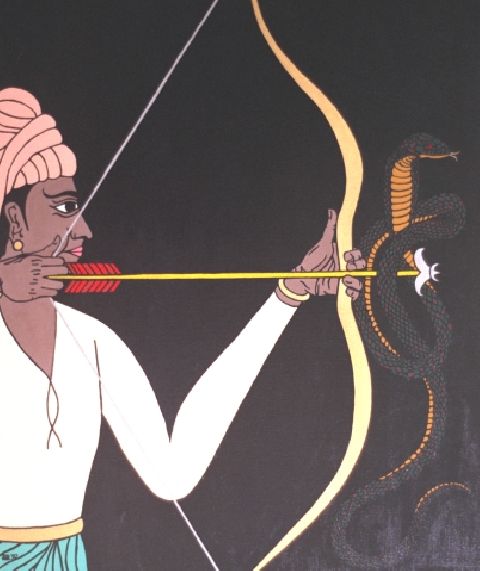
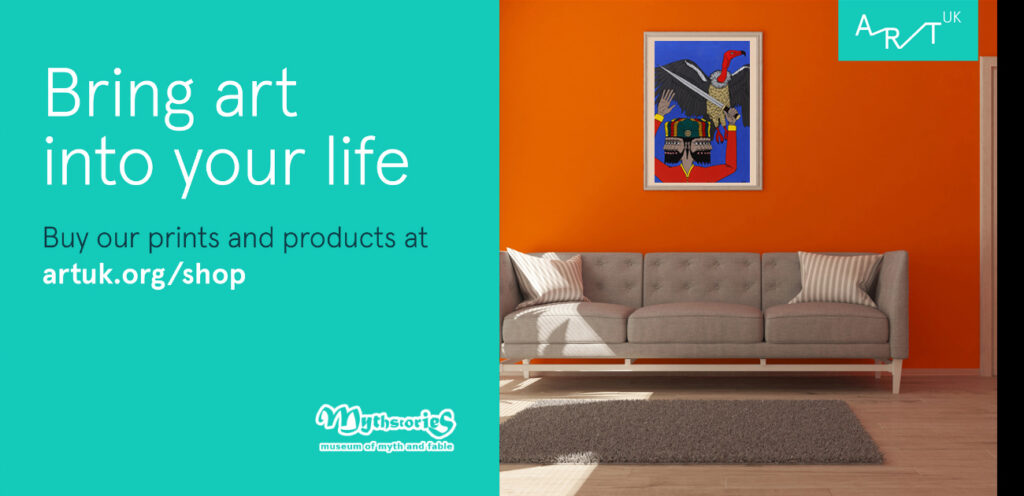
In 2000 they were donated to Mythstories as part of the original core collection when the charity was founded. By this time the audio version was changed to the website installation that still is available on this site starting here…
This was also available to all UK Primary Schools as part of the Governmental Portal The National Grid for Learning, where Mythstories website was the recommended site for Literacy.
In 2006 Mythstories received a grant from NESTA (National Endowment for Science Technology and the Arts) under their Illuminate Fund to increase kinaesthetic interpretation for the Ramayana exhibit and two others.
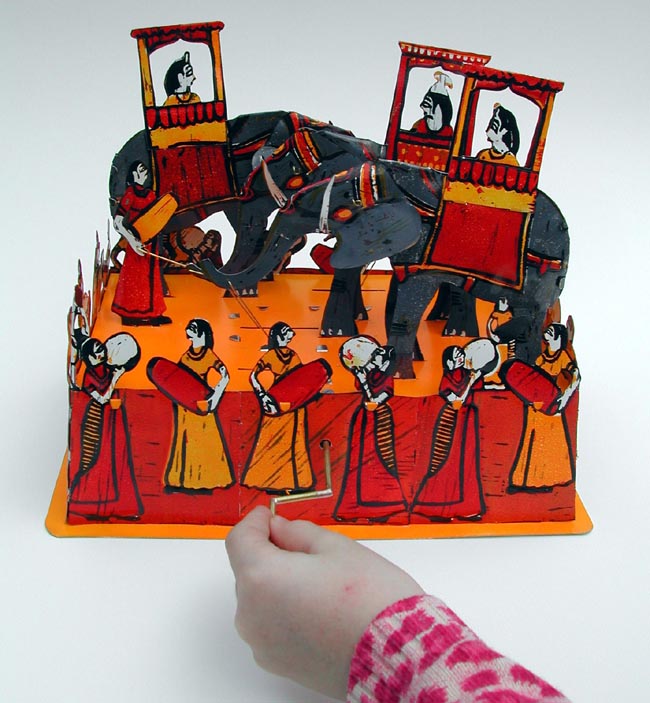
Automata maker John Grayson was commissioned to work with a group of adult Life Skills students at Shrewsbury College of Arts & Technology. The students listened to the story, looked at the paintings and then articulated their vision of the ‘missing’ images. Their descriptions informed the design of the five automata on display.
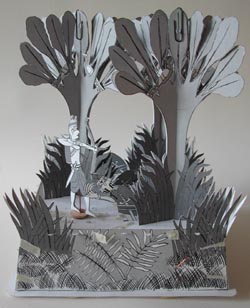
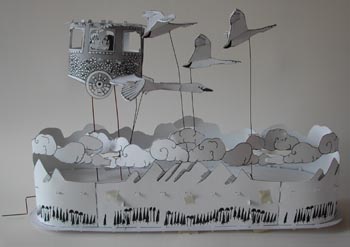
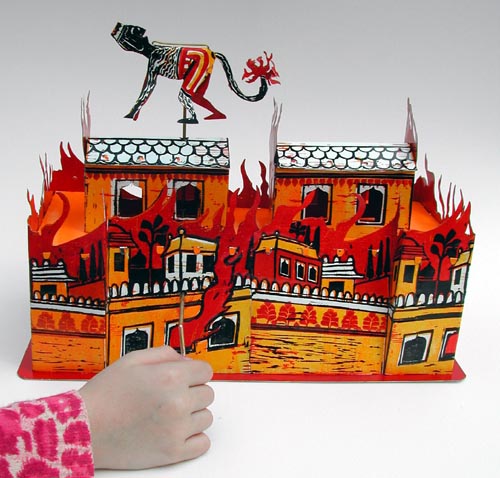
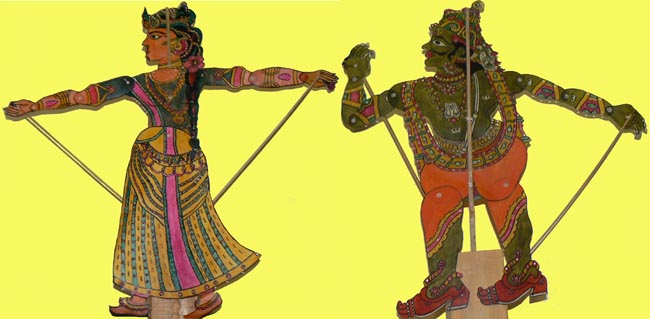
Kavi and Leela Mahipat, master puppeteers of Ahmedabad in India, were commissioned to make five shadow puppets depicting the key characters in the Ramayana for the new constellation. The puppets were hand-made in the traditional way using animal hide and then coloured with vegetable dyes.
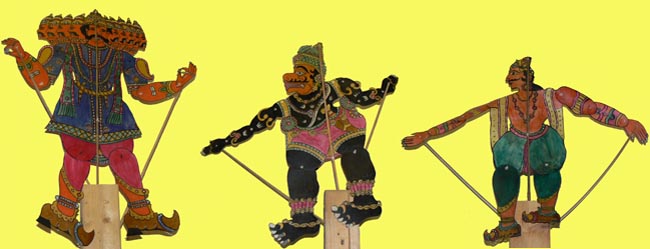
To unify the exhibit and display the automata we were able to purchase five pieces of hand made Indian furniture. The shelves, cupboards and drawers allowed us to add more kinaesthetic elements to the display. These included incense for visitors to smell, handling objects directly related to the narrative and Indian dressing up clothes.
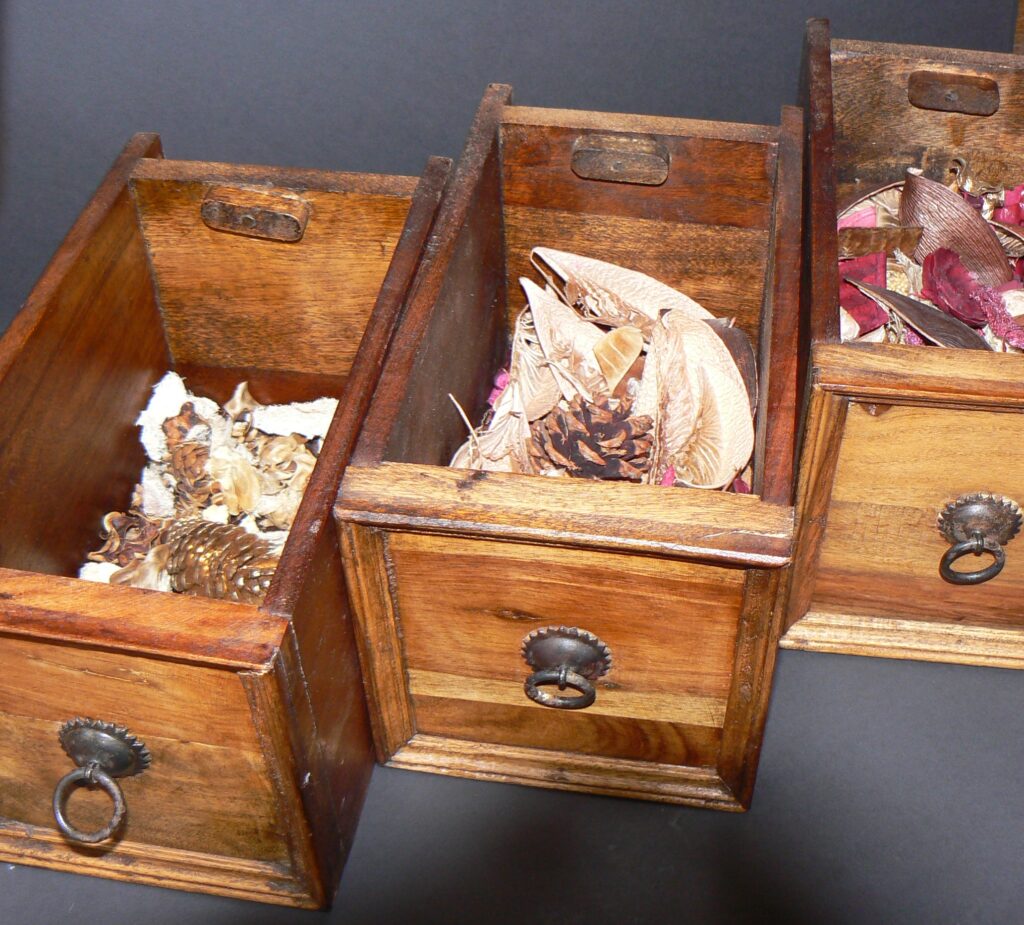
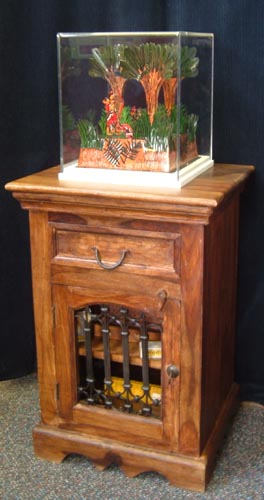
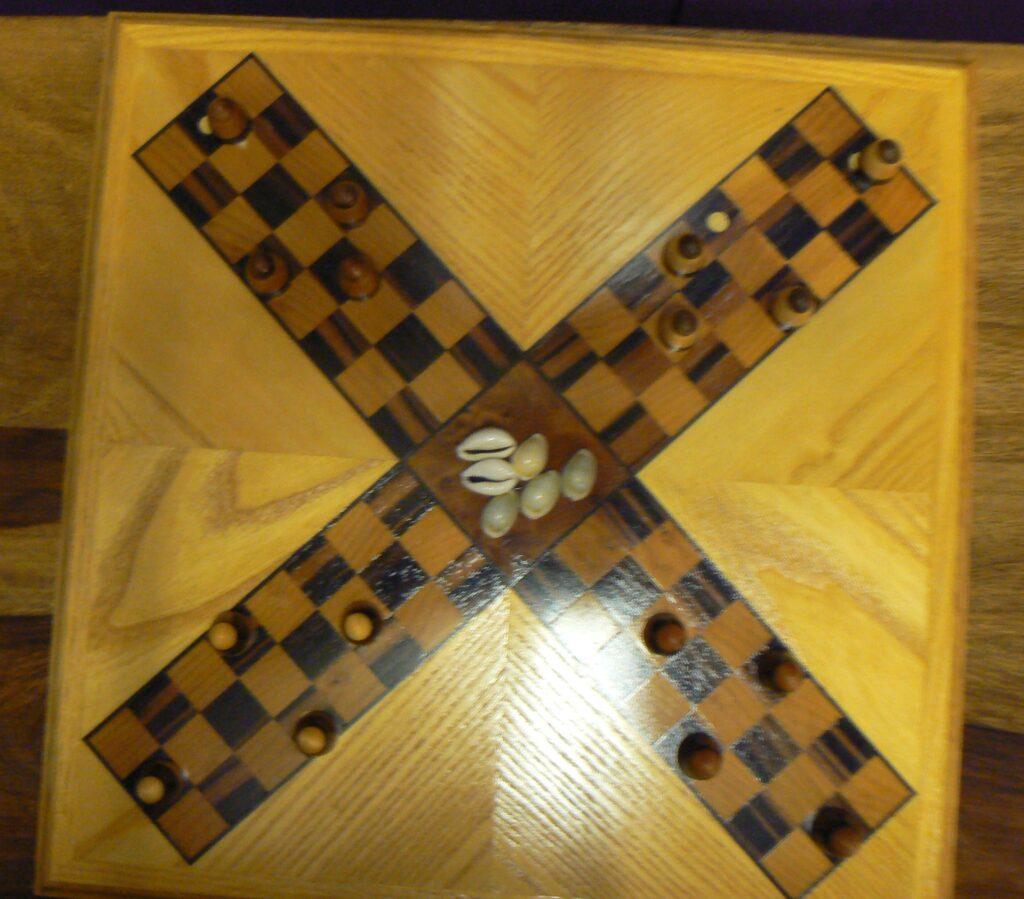
On a sixth shelf unit we included a make your own shadow puppet activity for younger visitors, together with two Indian board games. The first was the traditional Indian game of Pachisi (a race game similar to the Western board game of Ludo). The second was a modern game, TalkTent. This had been created in 2001/2 by storytellers Jan Blake, Malika Booker and Helen East, working with artists Ali Pretty and Lucille Tuitt and pupils from ten schools in London. The pupils batiked 10 panels, each depicting three stories, that were put together to create a life-size tent for storytelling and story creating.

A limited edition of ‘tiny tents’ was designed and produced by Kavi and Leela Mahipat to contain the game that linked some of those stories together. Helen East donated this TalkTent game to the museum in 2002.

The entire constellation went to St Donats Art Centre in South Wales for a month to coincide with the Beyond the Border International Storytelling Festival in July 2016.
The Ramayana Constellation is now part of the Grosvenor Park Academy Mini-Storytelling Museum in Chester.

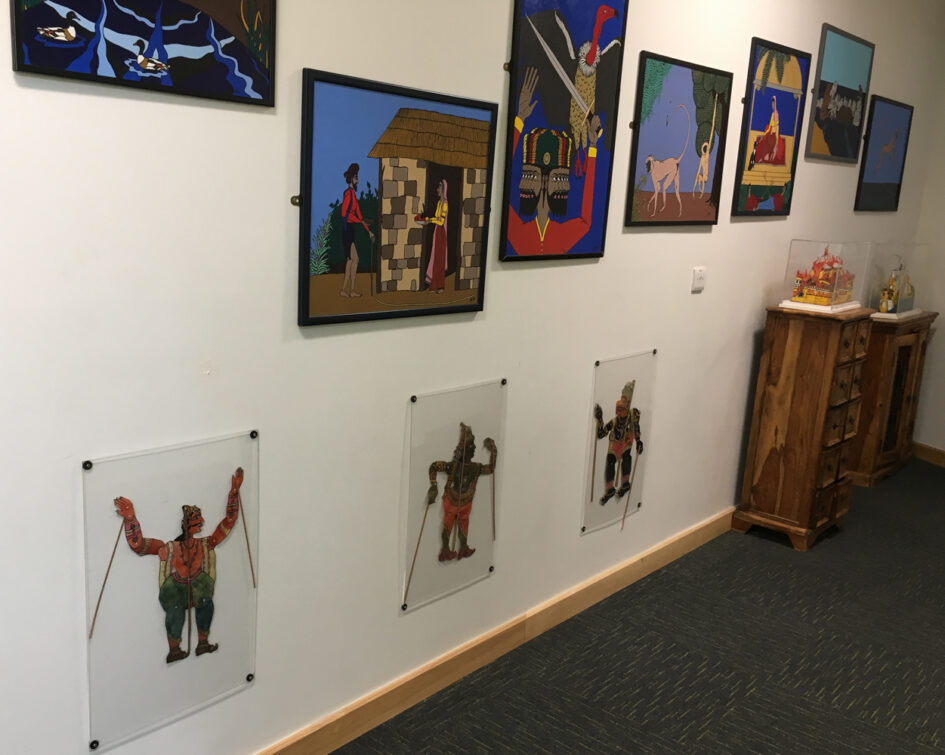



1 Pingback